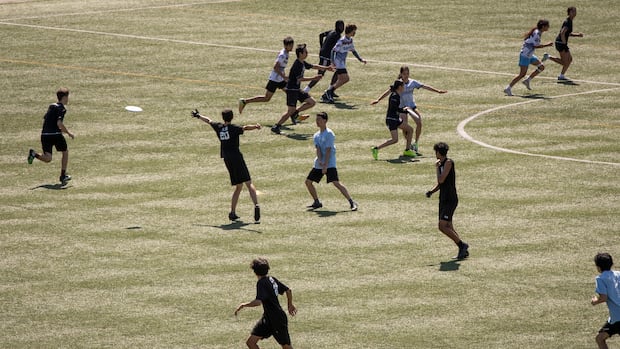Four out of five teenagers aren’t meeting physical activity recommendations, according to new data from Statistics Canada, and experts say without big changes, physical activity will keep losing out to screens and social media when it comes to teens.
Data released Friday found that from 2022 to 2024, only 21 per cent of youth aged 12-17 across Canada were meeting physical activity recommendations, compared to 36 per cent in the period from 2018 to 2019.
It’s the only age group to have seen significant declines in physical activity since the last data collection period.
It’s a worrying trend considering the significant influence physical activity has on kids’ development, says Travis Saunders, a professor at the University of Prince Edward Island who studies the health impacts of sedentary behaviour.
“Children and youth who get more physical activity do better on basically any outcome you could think of, in terms of physical health, in terms of mental health, bone health, academic achievement,” he told CBC News. “Pick something that you think is important for young people and the ones who are getting more physical activity are going to do better on that outcome.”
A healthy day for kids aged 5-17 should include at least 60 minutes of moderate to vigorous physical activity, and several hours of light physical activities, according to the Canadian 24-Hour Movement Guidelines. At least three days per week should also include vigorous and muscle-strengthening activities.
Nine out of ten preschoolers are hitting their physical activity guidelines, while just half of kids aged 5-11 were found to be hitting theirs, according to Statistics Canada.
The decline seen in the teenage cohort could reflect the lingering impacts of the COVID-19 pandemic, Saunders said. Kids who found their regular gym class and sports suddenly cancelled in 2020 may have never returned to more active patterns.
Girls falling behind
Teenage girls were the furthest behind on physical activity. Only eight per cent of girls aged 12-17 were found to be meeting the recommendations in the latest data period, compared to 37 per cent of girls aged 5-11.
“Whatever is impacting that age group, it’s very clearly impacted them more than their male counterparts,” Saunders said. More can be done to broaden kids’ ideas of what physical activity can be, he added.
Emphasizing activities like walking, biking and hiking, instead of just sports, will help set kids up for habits that are easier to continue long-term, he said.
Real change will require a societal shift to see physical activity as the serious health issue it is, says Mark Tremblay, senior scientist with the Healthy Active Living and Obesity Research group and a professor at the University of Ottawa.
When the pandemic hit, “there was a massive increase in screen time,” he said. “I think we’re seeing the hangover of that, that the cohort of adolescents that experienced that have not rebounded.”
Although frequent pilot projects and government investments have attempted to address youth physical activity, the investment is slim and inconsistent compared to other public health interventions, Tremblay said.
More regulation of addictive aspects of social media, along with sustained campaigns to create more spaces where kids want to gather in person, could help get them away from screens.
“If we could invest early and sustained to recalibrate people’s amount of indoor time and outdoor time, standing time and sitting time, which have just become way out of balance and are associated with all kinds of adverse problems in our brain and our hearts and elsewhere, that that’s what we need to do,” he said.







